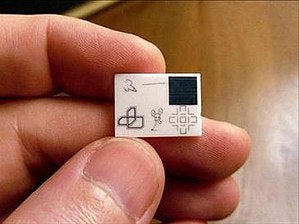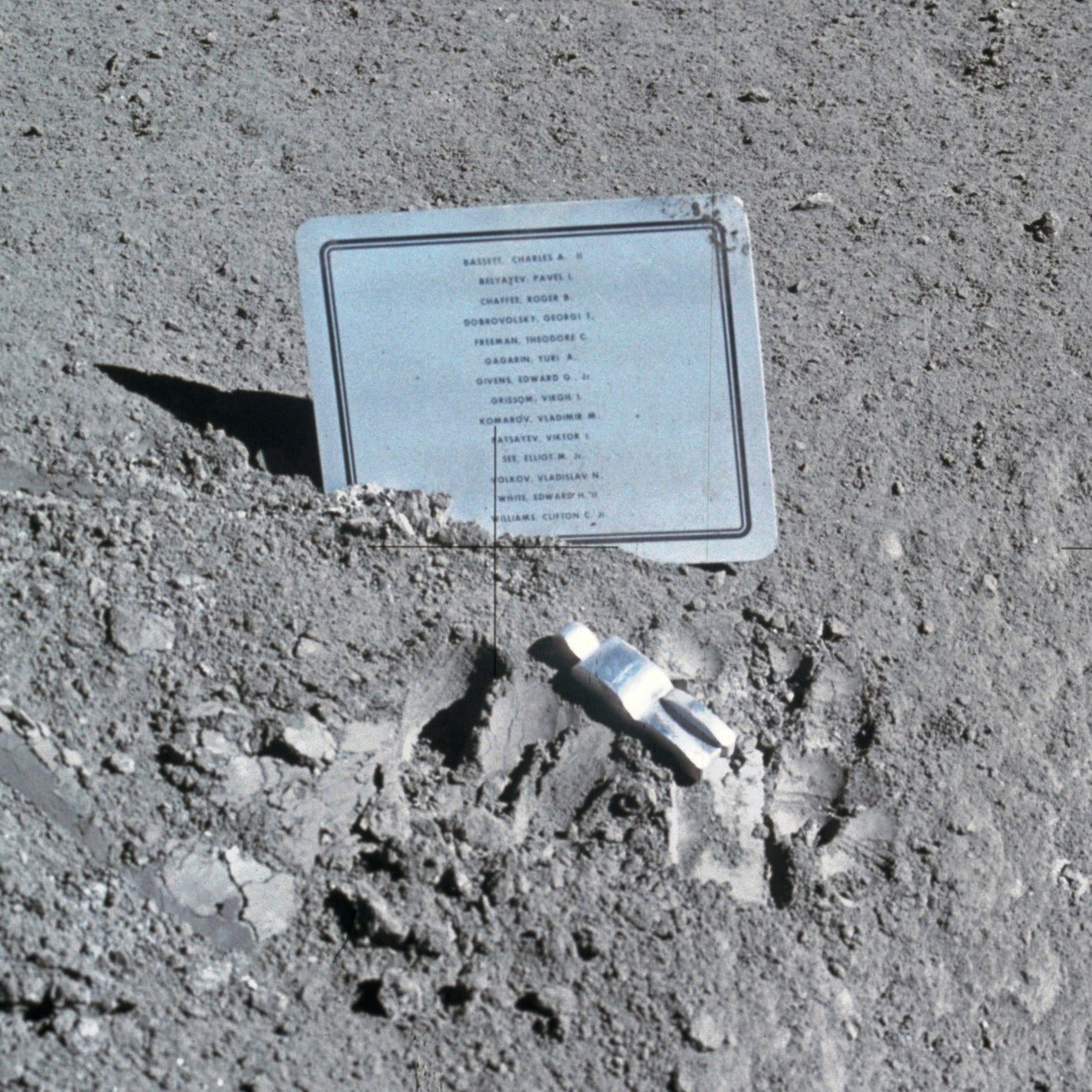The Moon Museum is pretty small as museums go - it’s a piece of ceramic wafer, 19 by 13mm in size. It contains tiny images from six artists, and it’s attached - allegedly - to the Apollo 12 Lunar Module, Intrepid. That means it’s been up there and open to visitors since November 1969. Nice museum! What about sculpture? There’s some sculpture on the moon too. I first discovered the Fallen Astronaut several years back in the beautiful, mind-expanding Phaidon book, Universe: Exploring the Astronomical World. Buy this book. I am not being paid to say that. I am compelled. Universe is one of those books I would rescue from my house if it was burning - a massive thing that shuffles together images from space exploration and scientific study with artefacts that speak of humanity’s response to the cosmos over the last few thousand years. Anyway, the Fallen Astronaut stopped me for about ten minutes when I first found it: a little aluminium model of a human space explorer, resting on a clumped mound of moondust, next to a note listing the names of people who had died during the space race. The model is lovely and quietly heartbreaking, and the names and so many, too many. But the mound, the mound it lies on is the thing that really gets to me. We have gone into space, and yet here we are right back at the beginning of it all, the beginning of human consciousness, the first flares and splatters of creativity, shaping the earth with our hands. The Fallen Astronaut and the Moon Museum both have mysterious, sometimes controversial backstories. More importantly, though, they are both illicit works. When the Fallen Astronaut was placed at Hadley Rille by the crew of Apollo 15 in 1971, there was no sign-off from NASA, and no awareness it was being installed. (Hadley Rille! The lonely poetry of it! Bereft.) Similarly, the Moon Museum’s creators asked NASA for its blessing, before getting tired of the bureaucracy and smuggling it up there. Allegedly. Give it a bit of thought and this all makes sense. Twelve people have been to the moon so far. It would be weird if there wasn’t art up there after all that. And what also makes sense is that not all of the art is that great. I find the Fallen Astronaut profoundly moving, but the Moon Museum in particular has been criticised for being deeply unrepresentative of the people back on earth. It can seem rather inert, a lone embarrassed cough in the dark planetarium. This, I think, is where games could come in. Reading Roving Mars, Professor Steve Squyre’s book about the Spirit and Opportunity rovers, I was fascinated by how much of NASA’s thinking revolves around payloads. Payloads are the start and the end of it: how much can we afford to send somewhere, and once we know what that figure is, what can we do within that? What kind of science can we afford in terms of weight? What - perhaps - what kind of art can we afford? Imagine a game about making decisions about this sort of stuff, going through missions, balancing science and art and getting the figures to add up. Or imagine going off-grid and smuggling. How small can we make our museums? How compact can we make our sculpture? Where to keep them secret? What do we want our art to say, who do we want it to speak for? Who gets to make it and where do we want it to end up? How are we going to avoid getting caught? Is there a trajectory? Does this stuff get bigger and grander as time passes? Also in Universe, I discovered the Moon Temple, a work by Jorge Mañes Rubio. “Moon Temple stands atop a massive staircase on the rim of Shackleton Crater, at the lunar South Pole.” It is a digital simulation, a curve with doorways, a space “for all human beings, beyond borders and territories - a spiritual space to come together as one.” Will we ever get around to something like this? It seems weirdly inevitable to me. I re-read Squyres’ book recently, thinking about the Fallen Astronaut and the Moon Temple, and Spirit and Opportunity. I was struck by something Squyres said about the solar panels on the rovers, arranged in a distinctive V formation. This design took an age to arrive at, and in the end it turned out that the most effective use of space was also the most beautiful. So are the rovers art as well as engineering? It would be hard to argue that they aren’t, I think. And what of the Lunar Module, Intrepid, that is a home to the Moon Museum? It’s a beautiful thing in its strangeness: squat, but with those water boatmen legs bent and tensed for impact. We become alien to go into space. It is hard not to look at Intrepid and see it as a living being, or as art as much as a piece of technology. After all, as everyone who plays games can tell you, sometimes there is no meaningful distinction between these things.

